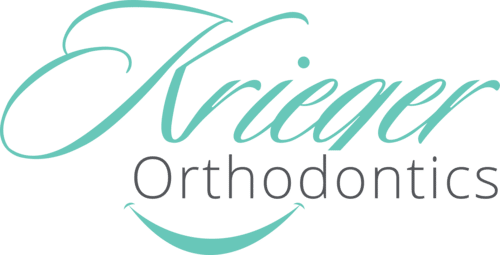Get Answers to Common Orthodontic Questions
Selecting an orthodontist in Lewisville who can help you achieve your smile dreams is important. Orthodontists are dental specialists who diagnose, prevent and treat dental and facial irregularities.
They receive an additional two to three years of specialized education beyond dental school to learn the proper way to align and straighten teeth. Only those with this formal education may call themselves “orthodontists,” and only orthodontists may be members of the American Association of Orthodontists (AAO).
Dr. Krieger from Krieger Orthodontics has achieved this specialization and is an active member of AAO.
The American Association of Orthodontists recommends an orthodontic screening at age seven. By this age, most children have several permanent teeth that have erupted, letting us evaluate their orthodontic needs.
By this age, Dr. Krieger can spot subtle problems with jaw growth and emerging teeth while some baby teeth are still present. That’s important, because some orthodontic problems may be easier to correct if they’re found early. Most orthodontic patients begin active braces treatment between ages 9 and 14.
Orthodontic treatment can be successful at almost any age. In fact, about one in every four orthodontic patients today is over age 18.
Thanks to today’s smaller, less visible and more comfortable orthodontic appliances, including metal braces, ceramic braces, and Invisalign, adults find treatment appealing.
Patients who need orthodontic treatment generally have one to three years of active treatment.
This can be determined through a free consultation at our Lewisville office.
The cost of orthodontic treatment depends on many factors, including how severe the problem is, how complex the problem is, and how long treatment lasts.
Dr. Krieger will be glad to discuss the cost of treatment and your financing options with you before treatment begins.
The good news is that braces are more affordable today than ever. Our staff also works with insurance companies and offers payment plans that meet your family’s budget.
Most orthodontic problems are inherited. Examples of these genetic problems are crowding, spacing, protrusion, extra or missing teeth and some jaw growth problems.
Other oral problems are caused by thumb- or finger-sucking, dental disease, accidents, the early or late loss of baby teeth, or other causes.
Crooked and crowded teeth are hard to clean and maintain.
A bad bite can also cause abnormal wear on tooth surfaces, difficulty chewing and/or speaking, and excess stress on supporting bone and gum tissue.
Without treatment, many problems become worse and can require additional dental care later in life.
Orthodontic treatment is a partnership between the doctor and patient. Dr. Krieger provides custom-made fixed or removable appliances that use gentle pressure to move teeth into their proper positions.
Your job is to follow Dr. Krieger instructions, keep scheduled orthodontic appointments and maintaining excellent oral hygiene to get the best results.
You will also need to see your general dentist as recommended to continue your general dental care.
If you notice an unwanted change in your smile or bite, contact Krieger Orthodontics at 972-899-1465 for information.
An orthodontic “tune-up” may be necessary to regain proper alignment.
Not necessarily. Research suggests that wisdom teeth don’t always cause teeth to shift.
In most cases, wisdom teeth are removed for general dental health reasons rather than for orthodontic health. Your family dentist or Dr. Krieger can help determine whether or not your wisdom teeth need to be removed.
Dr. Krieger will recommend how long to continue wearing your retainers, whether they are removable (the kind you put in and take out) or fixed (bonded behind your teeth). Wearing your retainers as prescribed is the best way to keep your teeth from moving after your orthodontic treatment.
There are many reasons teeth may move following orthodontic treatment. Teeth aren’t set in concrete, they are in bone. Because bone around your teeth is continually changing (breaking down and rebuilding), your teeth may shift after your braces are removed.
By wearing your retainers, your teeth are more likely to remain where Dr. Krieger has placed them through braces treatment.
After your braces are removed, your teeth settle and shift, and you use your teeth to bite and chew. The more serious and unwanted changes may be traced to genetics or later-than-normal growth, which is unpredictable.
Movement is most common in lower front teeth. This is particularly true if the teeth were extremely crowded before your treatment. Changes in tooth position are a lifelong and naturally occurring phenomenon.
The best way to keep your teeth from shifting is to wear your retainers as prescribed. If you notice movement after your braces are removed, please contact Krieger Orthodontics.
The fact is that throughout your lifetime, even though you have had orthodontic treatment, you can expect changes in tooth position.
Lots of things may cause your teeth to shift. Changes are different for everyone, and most of the time they’re hardly noticeable.
However, on occasion, changes can occur that are disappointing to both you and Dr. Krieger. If you notice that your teeth have shifted, it doesn’t mean that your orthodontic treatment has failed.
Shifting is a natural process. We expect changes in our bodies as we grow older, and teeth are no exception.
To help control and limit these changes, we’ll proscribe retainers after your braces are removed.
No. Retainers stabilize and preserve the alignment of teeth and jaws that orthodontic treatment achieved.
Many people wear removable retainers nightly for the rest of their lives. Ask your orthodontist for guidance about your long-term retainer use.
*Some Text Courtesy of the American Association of Orthodontists
